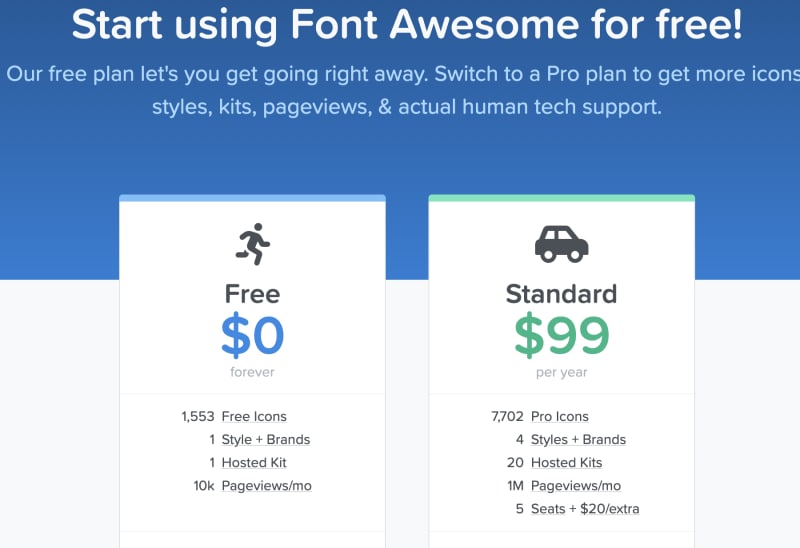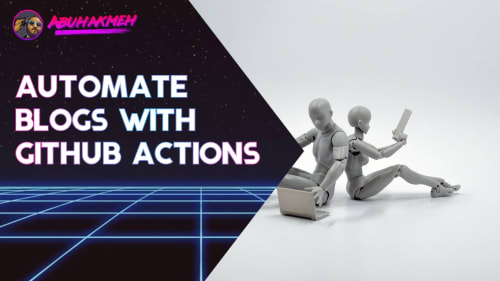The dream of many open source developers is to one day cast off the shackles of their corporate overlords and dedicate themselves to their passion project.
Sadly, there are fewer success stories in open source than we’d like, especially when it comes to open-source software successes. Fear not! In this post, I’ll set you on a path to success. The steps are easy, but the journey will be hard. Are you ready?
Also, stick around till the end of the post, and I’ll show you a project that succeeded.
Before we get started, I need to say something important. You must have a clear idea of your project’s value. A realistic understanding of its value, not tainted by your emotions towards it. It’s ok to be excited, but it is not ok to be delusional. This guide won’t work with every project, and you need to be honest with yourself.
Ask And Do Not Assume
If there is one thing open-source authors could do today to set their project on a path to success, it is this:
Value your work, then ask for that value! –Khalid
If you develop a piece of software that you think is worth $1,000, then ask for $1,000. Make it immediately clear what the transactional expectations are between you and the consumer of your product.
I’ve seen many authors start Patreon and Open Collective accounts with wishy-washy expectations of striking it rich. In reality, they see a few dollars trickle into their accounts.
Ask people to contribute the worth of your project. It may be scary putting a number on your project, but remember, folks will let you know either way if you have reasonable expectations.
You miss 100% of the shots you don’t take. –Wayne Gretzky
Well, in this case, when you don’t ask, you lose 100% value for your project.
Transparent Value Propositions
Another mistake I see authors committing is a lack of value transparency.
Giving the project money gets me what exactly? –Khalid
Give buyers a clear understanding of how you will be spending funds to ensure the future success of the project. If you’ve spent any time doing story points and project planning, this should be second nature to you.
Attach a monetary estimate to your issues, instead of story points, t-shirt sizes, or other issue estimate mechanisms.
Nobody wants to throw their money into an abyss. I believe folks generally want to help, but it is up to project authors to be transparent about how contributors can do that.
You Are A Marketer Now!
There’s an old saying in the culinary world: “People eat with their eyes.” Well, let me tweak that for open-source projects.
Contributors engage with their emotions. –Khalid
If your project looks uninspiring, it is not likely to draw any support. You want to bring in fanatics that will advocate for the success of the project. You can achieve a level of fanaticism by creating a vision for your project. What do you believe your project does better than any other project?
Once you have a vision, reinforce it with the following techniques:
- Brand Design
- Great Documentation
- Marketing content like talks, videos, and blog posts
- Community Engagement
In my opinion, you should be spending 50% of your project’s time on marketing. Spend your energy and resources here, and when you think you’re near the end, spend a little more.
Identity Engagement
Here’s a fun fact. Developers like to identify themselves with the projects they support and the tools they use. How often have you heard this familiar phrase?
I’m a _____ developer! –Your Fanatic
Insert your project’s name into the blank through effective advocacy, and you’ll be off to the races! With the promotion of your project, you can help individuals craft an identity around your project.
Convince Technicians But Sell To Businesses
This one seems obvious, but stop trying to sell to folks who have no intention of parting with their money.
Technicians (software developers, designers, etc.) are stubborn, and I can say that as a software developer. We think we can do what you do, and better than you can! Speak to the people with money.
Most folks working to solve a problem have to balance two fundamental concepts: Will and Resources.
Will is the ability to move forward through time and through hardships to get what you want. We can replenish will with successes. On the other hand, failures can drain will entirely.
Problem solvers also have tangible resources at their diposal: people, tools, and money. New companies have limited resources, while established brands have a seemingly infinite supply.
Lucky for you, this is where you position your project: “My project will make sure you succeed for the low-price of X!” Nobody likes to fail and especially the people who can afford to buy their way out of failure.
Talk plainly to the folks who have the money. Focus your messaging and branding on appealing to people who may not be technincians but are motivated to solve problems.
Let’s take a look at two similar products and their real-world taglines:
Polyglot Persistence for .NET Systems using the Rock Solid PostgreSQL Database –Marten
The tagline speaks to technicians, but it is not immediately clear what the value is to everyone. Juxtapose the first tagline against this vision from Elastic.
Search everything, anywhere. –Elasticsearch
See how the second pitch immediately appeals to everyone. It’s also immediately appealing to businesses, who may have a data visibility issue. Who doesn’t want to search for everything from anywhere?
Convince technicians of your project’s value, but sell to the folks with capital.
Open Source Success Story
There is one project that immediately comes to mind that has crossed the bridge to sustainability. With over 60,000 stars and 10,000 forks on GitHub. This project claims to be ” one of the top open-source projects on GitHub.”
Want to know what project it is?

FontAwesome
FontAwesome is doing a lot right as an open-source project. Authors who hope to build their successful open-source model should start by studying FontAwesome’s path to success.
Let’s go through the guide and see what FontAwesome did right.
Ask And Do Not Assume ✔️
FontAwesome immediately informs you that there is a pro version of their product. As of writing this post, they value their framework at a palatable $99.

As a potential customer, I can immediately understand how much they are asking of me.
I have enough information to act just by looking at the sales page. I want to believe I am making an informed decision, and a clear monetary value helps me do just that.
Transparent Value ✔️
Looking at their sales page, I know exactly what I’ll be getting for my $99:
- 7,702 Pro Icons
- 4 Styles + Brands
- 20 Hosted Kits
- 1M Pageviews/mo
- 5Seats + $20/extra
Not only that, they take the time to explain what it all means.
You Are A Marketer Now! ✔️
FontAwesome is a visual project. Every icon helps to reinforce their brand identity. It also doesn’t hurt that every time a company uses their product, they get more visibility.
While the quality of the final product is essential, the team at FontAwesome spend just as much time educating their audience and promoting their project through documentation, GitHub issues, social media, and more.
Identity Engagement ✔️
FontAwesome has a store where users can identify themselves as FontAwesome users.
Finally, get icons on your shirts as easily as you’ve gotten them on your website!–FontAwesome
They also allow folks to contribute to the identity ecosystem.
Tell us about your idea and we may just fa-bricate into a real product. –FontAwesome
The team at FontAwesome wants you to be a fanatic and they’ll help you get there.
Convince Technicians But Sell To Businesses ✔️
FontAwesome does a great job convincing technicians that there is value in using their project by providing integration with frameworks and tools like Sketch, Adobe Apps, Vue.js, and React. The project screams, “Use FontAwesome with what YOU like.” But that’s not the most exciting part of what they’ve done.
You need only look at the companies list on their site to see that they have transcended convincing technicians and are selling to businesses.
- McDonald’s
- Inc.
- Merriam-Webster
- TV Guide
Developers may be able to afford the $99 price tag, but what FontAwesome has done is make sure businesses can’t afford not to use their project.
Get more icons, styles, tools, & tech support.
Upgrade to Font Awesome Pro!–FontAwesome
I say, shut up and take my money!
Conclusion
The current landscape of open-source funding is an unsustainable web of problems. The primary cause stems from unclear expectations and a lot of well-intentioned folks making too many assumptions. As open-source authors, expectations must be set upfront and transparently. Never assume people will magically act the way you think they will.
Technicians are likely your immediate users, and you should convince them of the value of your project. In addition to using your project, folks want to enhance their identity with the tools they use. Let your project be that avenue. Your goal is to help technicians; it isn’t to sell them.
Don’t engage an audience financially that has no interest in reciprocating financially; it’s a waste of precious energy and time.
Focus on the folks who can provide financial support and speak their language. Remember, you’re as much a marketer as you are an author. Focus on businesses and their drive to succeed, and they’ll be willing to part with their money.
Thank you for reading, and I’d love to hear from you and your thoughts.

 Photo by
Photo by 

